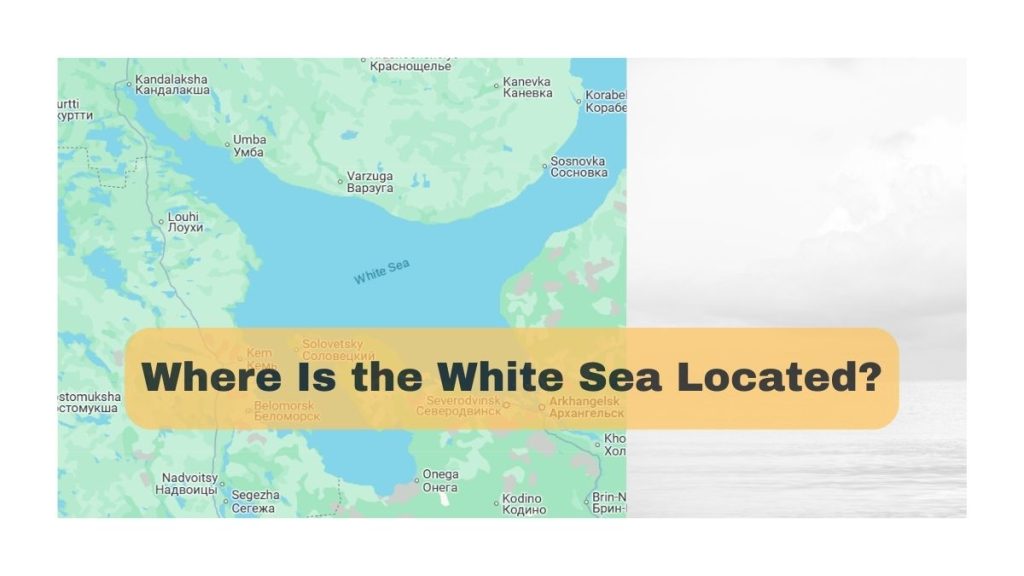The White Sea (Click here to see map) is a body of water nestled in northwest Russia, acting as a southern inlet of the Barents Sea (part of the Arctic Ocean). Bordered by the Arkhangelsk region and the Republic of Karelia, it connects to the Barents Sea via the narrow Strait of Gorlo. Many wonder if it is near Scandinavia—while it does not directly border Finland or Norway, it lies close to northern Finland.

Is the White Sea Part of the Arctic Ocean?
Yes, the White Sea is indirectly connected to the Arctic Ocean through the Barents Sea. While it is a semi-enclosed basin, its northern gateway (the Strait of Gorlo) links it to the larger Arctic marine system. This makes its waters colder and heavily influenced by Arctic climate patterns.
Which Countries Border the White Sea?
The White Sea lies entirely within Russian territory, with its shores touching:
- Arkhangelsk Oblast (major cities: Arkhangelsk, Severodvinsk)
- Republic of Karelia (city: Belomorsk)
To see location on map Click Here
Though Finland is nearby, it does not directly border the White Sea. The region is historically significant for trade and naval activities in Northern Russia.
Why Is It Called the White Sea?
There are a few theories:
- Ice Coverage: Frozen for nearly half the year, its icy appearance may have inspired the name.
- Mineral Richness: Some suggest high concentrations of white minerals or sediment contribute.
- Historical Naming: Early Slavic and Scandinavian explorers referred to it as “White” possibly due to its foggy, pale waters.
How Cold Is the White Sea?
The White Sea has a subarctic climate, with temperatures varying drastically:
- Winter (Dec–Mar): -15°C to -5°C (partially frozen, ice up to 1.5m thick).
- Summer (Jun–Aug): 8°C to 15°C (surface waters remain chilly).
Its salinity is lower than the Barents Sea due to freshwater inflow from rivers like the Northern Dvina.
Major Ports and Cities Along the White Sea
Key economic and cultural hubs include:
- Arkhangelsk – The largest port city, historically vital for trade.
- Severodvinsk – A major shipbuilding and submarine production center.
- Belomorsk – Known for the White Sea-Baltic Canal, linking to the Baltic Sea.
These cities play crucial roles in Russia’s northern maritime activities.
Wildlife and Ecological Importance
The White Sea is a biodiverse zone, home to:
- Beluga Whales – Frequently spotted near the Solovetsky Islands.
- Ringed & Grey Seals – Thrive in its icy waters.
- Migratory Birds – Important nesting grounds for puffins and guillemots.
Conservation efforts focus on protecting its delicate Arctic ecosystem from industrial pollution.
Key Takeaways
- Location: Northwest Russia, connected to the Barents Sea.
- Climate: Subarctic, partially frozen in winter.
- Cities: Arkhangelsk, Severodvinsk, and Belomorsk are key ports.
- Wildlife: Rich in marine life, including belugas and seals.
- Tourism: Emerging destination for Arctic explorers.
The White Sea remains a fascinating, lesser-known region blending natural beauty with historical significance.





























